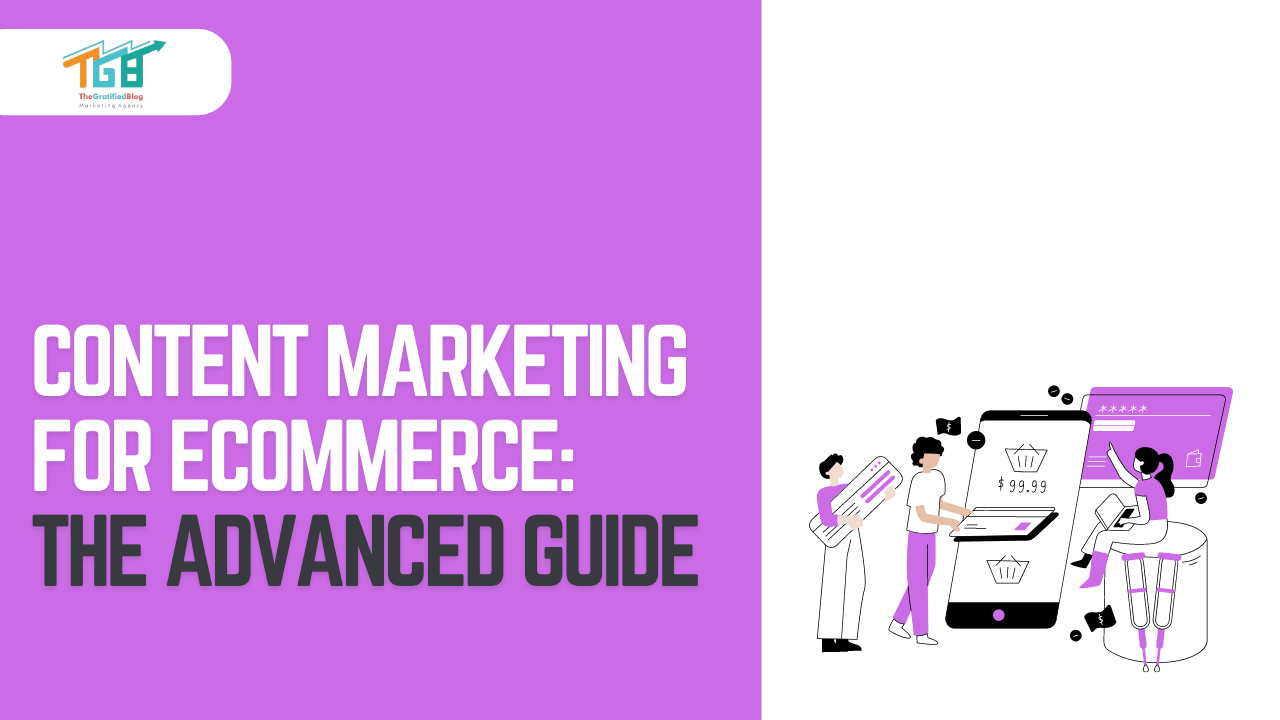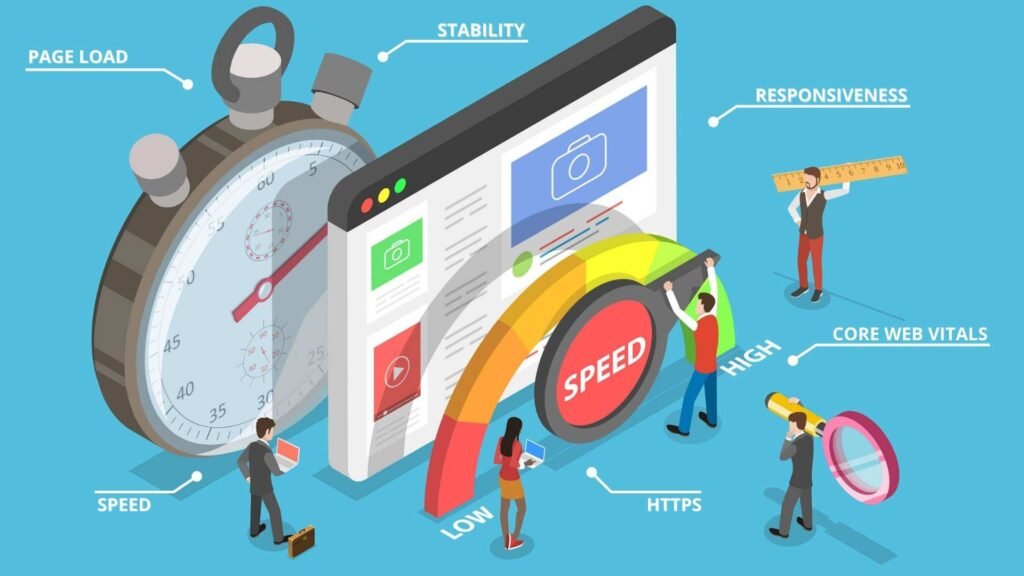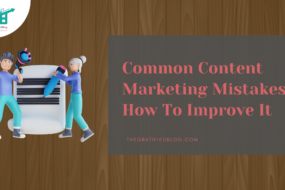
In the rapidly evolving and competitive landscape of the ecommerce industry, employing effective strategies such as content marketing for ecommerce is essential for success. Simply having a website and listing products is no longer sufficient; active engagement with potential customers and the establishment of brand loyalty have become crucial components of achieving prominence in this dynamic environment.
The marketing strategy should be robust so that website visitors take the initiative to purchase a product and stick to the same company for further purchases for a more extended period.
One of the best ways to achieve these goals is to have a content marketing strategy. It is one of the most effective ways to increase visibility and reach more potential customers.
This article will explore the topic of content marketing for e-commerce in detail, why it is essential, and how you can use it to your advantage.
What Is Content Marketing For E-commerce?
It is an inbound digital strategy in marketing that generates and disseminates valuable content to your intended audience. It is used to educate, engage, and retain customers while providing a platform for businesses to promote their services.
Content marketing is essential for any e-commerce business to be successful. You can quickly maximize online sales by creating content that supports customers throughout the buyer’s process and builds trust in your brand. There are countless ways to do this, from blogs, videos, and podcasts to infographics!
Why Is Content Marketing For Ecommerce Important?
There are multiple reasons why content marketing is essential for e-commerce businesses. Such as :
Establishes Brand Awareness
Before a business can retain a customer base, it must establish a brand identity. Content marketing can help companies create that initial foundation by building up their industry presence through publishing content. This way, customers will be more likely to recognize and remember the company when purchasing.
To create a brand identity, businesses should research their audience, value proposition, and competition. They should also clarify and understand their target audience’s pain points and communicate how their company or product helps solve them. Once a brand identity is established, businesses should integrate it within their community.
A strong brand position should differentiate the company’s offering and make it easy for prospects to understand what makes the brand unique throughout the sales process. The main goal should be to help prospects address a problem or surmount a challenge they currently face.
Exceptional customer support will keep customers coming back for more. Establishing social media accounts is imperative for businesses and their customers’ platforms, and they should promptly address inquiries and issues from customers that arise through these channels.

Source: performancein.com
Educates Potential And Existing Customers
To distinguish yourself in the saturated realm of online shopping, your e-commerce business has several options. Content marketing is a powerful tool to empower and inform your customers, helping them make more informed buying decisions. By providing educational and informative material, you can give your customers the knowledge they need to make confident purchases.
Additionally, this content serves as a way to play a crucial role in keeping your existing customers informed about your newest products or services. They influence consumer perception and buying decisions, making them a valuable platform for content marketing. Personal factors, such as demographics and social groups, influence consumer behavior and can be targeted through content marketing.
User-generated content is another effective strategy for engaging your audience and building trust. Consistent, high-quality content is essential for establishing your brand as a credible source of information and building authority online. Content marketing helps answer your audience’s questions, build trust, develop relationships, improve conversions, and generate leads. You can effectively influence purchasing decisions by understanding the consumer decision-making process and leveraging content marketing strategies.

Source: scnsoft.com
Strengthens Customer Loyalty
Building a customer base is important, but retaining the customers you already have is equally essential. One way to achieve this is through content marketing, which can strengthen customer loyalty by providing valuable and engaging material. This connection is vital for building customer engagement and can help them connect with your brand on a deeper level.
Maintaining consistent brand messaging is among the numerous elements determining your business’s growth and success. Prominent brands excel in presenting a consistent brand image at every interaction with customers. Great content is an essential factor in retaining your audience and is one of the most effective methods of growing audience engagement.
You are developing your brand presence and driving sales. Loyal customers are often repeat customers, and by providing ongoing value to your customers through content, you can encourage them to remain faithful to your brand. Crafting content that connects with your intended audience to read, watch, and share can add value to your products, entertain your audience, and keep your customers engaged with your brand.

Source: searchenginejournal.com
Improves Your Site’s SEO Performance
When it comes to online business, being visible on Google is vital. This is where content marketing comes in, as it can improve your SEO performance by providing optimized content with relevant keywords. However, it’s essential to have a strategic approach to get the desired results.
Some of the best content marketing SEO strategies involve naturally placing keywords in content, optimizing meta descriptions and titles, using internal linking, and more. Internal linking is essential for SEO, as it helps search engines understand your site’s structure, passes authority and helps users navigate your site.
By using internal links strategically, you can signal to Google that one page is related to another, which helps it Comprehend the context of your web pages and their interrelations. A robust internal linking framework also aids search engines in discovering and indexing your site’s pages. Therefore, an excellent internal linking strategy is crucial to boosting your SEO.

Source: visitpalmsprings.com
Increases Conversions And Revenue
A solid e-commerce content strategy is essential for retailers to build relationships with their audience and win customers. By catering to the distinct requirements of their target audience market, brands can create persuasive content that makes potential customers more confident in their purchasing decisions. Content marketing has the potential to generate organic traffic for your site and increase customer engagement.
Highly engaged customers are more inclined to purchase, leading to elevated conversion rates and more significant revenue. A successful approach involves seamlessly integrating valuable content across the customer journey, ensuring prospective buyers can readily access pertinent information through various channels at any given moment. Examples of valuable e-commerce content include video guides, high-quality images, and online forums.
A content strategy for e-commerce websites entails devising a comprehensive plan to research, generate, and implement top-notch content, aiming to attract ideal buyers. It involves embracing SEO blogging, identifying your target audience, building your content team, and perfecting your product descriptions for SEO. Collaborating within your industry, measuring results, and asking for customer feedback are essential.
A successful content marketing strategy for e-commerce centers focuses on meeting the needs of your target audience, including their primary challenges, concerns, and questions. By meeting those needs with compelling content, brands can boost customer loyalty, organic traffic, conversions, and customer retention.

Source: blogtyrant.com
Some Content Marketing Strategy For Ecommerce To Help You Get Started
There are many ways to get your content marketing strategy up and running. Here are some tips for you to consider:
Identify Your Target Audience
Understanding your target audience is crucial before embarking on a content marketing plan. Utilizing this understanding will aid you in developing content that connects with them and engages them effectively. Researching your competition is also essential to gain insights into their content creation approach.
By analyzing their content, you can identify gaps in the market and create unique content that stands out. Knowing your audience and competition will help customize your content to align with their needs and preferences, Increasing the chances of sharing your content and reaching a wider audience.
You understand your audience’s pain points and interests, assisting you in crafting content that caters to their particular requirements. That will position you as an authority in your industry and build trust. Connecting with your audience can create a devoted following and enhance brand recognition.
By creating valuable content.
Therefore, taking the time to research your target audience and competition is a crucial step in creating a successful content marketing plan.

Create User-Generated Content (UGC)
User-generated content can be a great way to grow your e-commerce business. Not only does it help you engage with it, but it also attracts customers and contributes to establishing credibility and trust in the brand. It also encourages customers to share pictures of your products with their social networks or leave reviews on your website. It will ultimately boost your SEO performance and increase conversions.

Use Product Photos Within Your Content
Images are everything in today’s digital world. So, ensure you use high-quality images that draw attention and encourage customers to take action. Product photos are essential for e-commerce businesses, as customers need to be able to visualize the items they’re looking at. Photos should also include tags, descriptions, and relevant keywords so potential customers can easily find them online.

Create Buying Guides
It could be the backbone as it helps customers make informed purchasing decisions. These guides can include product reviews, comparisons, and product use tips. They should be thorough and easy to understand so potential customers know what they’re getting when buying from you.

Leverage Visually Engaging Content
Today’s consumers are visual creatures, so creating visually stunning content is essential. Visually attractive content is more likely to be shared across social media platforms, helping you spread the word about your brand. It can include videos, infographics, and slideshows that help engage customers and showcase your products.

Measure Results
Last but not least, measuring the success of your e-commerce content marketing plan is essential. See which posts have the highest engagement and clickthrough rates. Analyze engagement, click-through, and conversion rates to identify effective and ineffective aspects. This allows you to refine your content strategy for e-commerce as needed to ensure your content is as effective as possible.

Optimal Tools for Content Marketing in Ecommerce
If you focus on enhancing your content marketing plan, many tools can help. Here is a list of the best tools for e-commerce business.
BuzzSumo
Content discovery and research are a must when creating content. It helps you find the most popular posts in any niche to make similar content more likely to engage customers.
Also, you can use it to find influencers in your industry and contact them for collaborations. You can even use it to track competitors and see what content they are producing.
Google Analytics
Google Analytics stands out as a superb tool for monitoring the performance of your content. It offers insights into how visitors interact with your website; Google Analytics can assist in pinpointing specific areas for improvement.
For example, you can track which pages receive the most views and use this information to create more targeted content. You can also set up goals and measure progress over time.
Ahrefs
Ahrefs is an SEO tool that enables you to track your website’s ranking and optimize it for search engines.
It also provides data about identifying which content performs most effectively, enabling you to generate similar content that is more likely to engage customers.
Semrush
Semrush is another SEO tool that helps you track and analyze competitor content and other features like a keyword explorer to help you identify the best keywords for your content.
It can be invaluable in helping you create targeted and compelling content.
Grammarly
Creating content without typos and grammatical errors is essential. Grammarly is a great tool that helps you catch mistakes before publishing your content.
It ensures that your content has the highest quality possible, leading to better customer engagement and conversions.
Conclusion
I hope you understand why content marketing for e-commerce is essential and how to create compelling content to maximize your profits. By following these tips, you’ll be well on your way to creating content that resonates with customers and leads to increased conversions and sales.
If you have any doubts about content marketing for e-commerce or want to learn more about it, feel free to get in touch. We will be happy to help you out.
Thanks for reading 🙂








No Comments